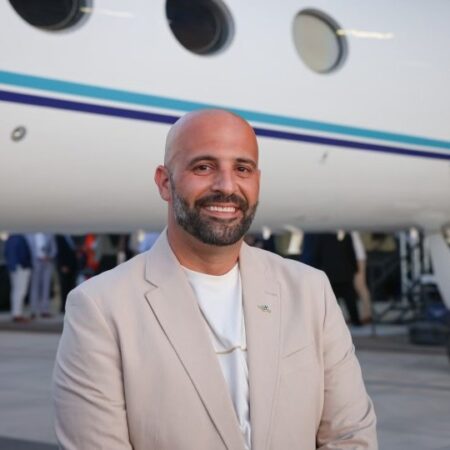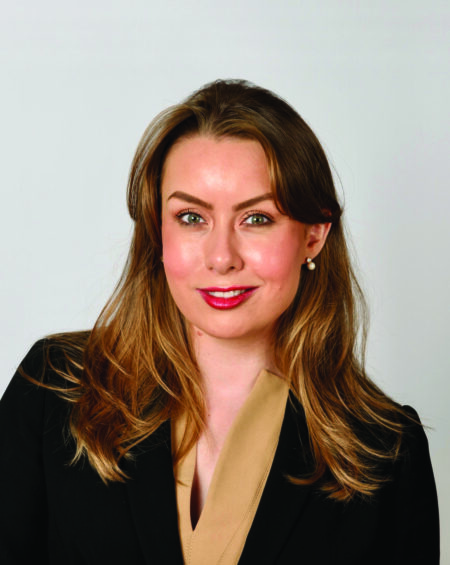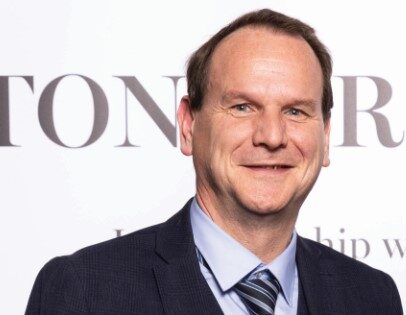How did you get involved in the aviation industry and IAWA?
I often think of myself as rather unusual because I knew at the age of 16 that I wanted to be an international airline lawyer. I had been exposed to the aviation and airline industry at a young age through family and my dad was a pilot in the military. I was somewhat deterred in my studies – I spent two summers in Tokyo during high school, so I had an exposure unlike many others and I was studying Japanese – but because I was a woman many of my professors didn’t think I’d ever be able to study law in Japan or Asia. This motivated me to continue forward and I was able to get an opportunity in aviation straight out of my undergrad studies.
I was trying to get into a legal department at an airline, although I’d not gone to law school yet, and I got an opportunity at Northwest Airlines [now Delta Air Lines]. After I had graduated from law school I moved to Continental Airlines [now United Airlines] and at the time Continental was in a survival mode – they were either going to go into their third bankruptcy and be out of business or they had to dramatically turn things around. A big part of the plan was to turn it from a domestic airline into a global one, and I stepped up and said, “If you’re going to go from four locations in Europe to 25+, you really need an international lawyer to ensure the business is set up correctly right from the get-go.”
I became the first international lawyer for Continental and probably one of the first for any of the US carriers at the time. My focus for the next 10 years was to travel around the world with our business teams and set up the business and operations so we could fly from the USA to various countries around the world. My passion was international law and I managed to achieve my childhood dream.
My introduction to IAWA was through a meeting in 1998 with Kathy Posner, the president at the time, in Washington DC. I met her at a legal seminar and she mentioned the group and said they were getting together in Ireland for their annual conference. By happy coincidence, Ireland was on the list of countries Continental was expanding to and I had to go to for business, so I arranged it so that I could attend the conference in Shannon. It really made an impact on my career because it connected me with this inspiring global organization. At the time I was in my late twenties and embarking on my legal career and IAWA played a pivotal role for me.
Right: Annual conferences provide opportunities for members to share developments and ideas
How has IAWA developed and changed since it was formed?
IAWA was established in 1988 and was a very small group for the first five years. The conferences weren’t that big – when I first went in 1998 there were about 75 women. What is special about IAWA is that when the group is smaller you can really make connections and really build relationships; that is what IAWA is about. It is not a professional speed dating kind of group; it is about actually getting to know the members and learning from them. We just had our last conference where we had 250 women and I can honestly say you still have that feeling and make meaningful relationships with people even though it is three times the size. We’re not looking to grow into an organization of thousands of women because we think it would be difficult to maintain the essence of IAWA, but we obviously want to grow. There are so many more women out there that we want to reach so we do continue to slowly grow but we do keep in mind the special IAWA connection that we create.
IAWA has been developing some sustainable platforms with partners such as Boeing, Airbus and FedEx. Based on support from partners, we have been able to build a solid foundation and from that we have been able to offer more as an organization. In the past few years we have created IAWA Connect, which provides a number of options for connecting with fellow members because we realize that people can’t always get to our annual conference. In 2014 we held more than 25 IAWA Connects from Chicago to Uruguay, Prague to Shanghai and all points in between. We have established two ways to connect: firstly we have tried to organize more formal IAWA receptions such as the one taking place in Washington DC in June 2015. We are also doing a lot of Connects at industry events – we had one at the Embry-Riddle Aviation Law and Insurance Symposium at the end of January 2015. We invited all the women at that conference to join us at a breakfast meeting. At the end of February we were in Seoul for a formal breakfast event for more than 40 women at the IATA Legal Symposium where we featured an all-male panel who spoke on the importance of men supporting women in leadership development.
We also had an IAWA event in November 2014 in Brussels in partnership with the European Business Aviation Association and Women In Aerospace, which had about 100 women attend. Having something more regional like this allows our European members to meet.
Left: The Association has members from 33 countries worldwide
Why do women still play a minor role in aviation?
Statistics show only 17% of women are in leadership roles across all industries, which is very low – obviously we want to see it at 50%. The aviation figures are a bit lower than that – the numbers seem to be anywhere between 10% and 17%. I think the reason for this is the aviation industry – general or commercial – was started with mostly men that came from the military. Many pilots get their training through the military because it is so expensive, so that has been a hindrance to women becoming pilots.
Aviation is a business that has a very male stereotype. There is a heavy reliance on engineering but when you look at education, there are fewer women enrolled in these types of courses. Getting more women interested in engineering is difficult. We need to start earlier – at the elementary/high school ages – to get more girls interested in the STEM [science, technology, engineering and mathematics] areas that can give them the skill set to become engineers. That is a global issue to some degree, although I was fascinated to find out about a university in Romania where 50% of the aviation engineering students are women.
We’re looking at how IAWA can better support education. We offer five annual scholarships to women studying various areas of aviation and aerospace. We partner with Embry-Riddle Aeronautical University, Vaughn College of Aeronautics and Technology, McGill University and Southern Methodist University where we have members actively engaged in the support of women’s development in our industry.
Why is it important for women to be in the aviation industry?
The aviation industry is critical to our global economy. Aviation connects us all over the world – whether you’re going for business, connecting with cultures, family, etc, aviation is one of the foundations of our global society. Women need to be part of it and we need to be in leadership roles making the industry more successful. We need women in all businesses because it makes companies more successful – we need the diversity of cognitive thinking, it is important for innovation, so that’s why we find it very important to have women at all levels of aviation.
Which female aviation figures stand out for you?
There are so many across the board. We’ll start with one of the more well known who has an IAWA tie – Amelia Earhart. Last year Amelia was receiving a posthumous award for her aviation achievements from ICAO and IATA in Latin America and sadly there was no one in her family who could accept it, so they asked IAWA to accept it on her behalf. We were greatly honored to do so. She was a pioneer and gave her life to aviation and dedicated every aspect of her life to it to the point that she didn’t have any descendants herself.
ICAO celebrated its 70th anniversary last year and in December we did a joint IAWA/ICAO reception that looked at 70 women throughout the 70 years. We reflected a lot on women in all aspects – a great figure from the general aviation side was Olive Ann Beech, who took over Beech Aircraft when her husband passed away and did an amazing job leading the company.
Women are moving to the top – we’re inspired to see a few female CEOs such as Carolyn McCall at EasyJet, one of the first female CEOs of a large airline. Marillyn Hewson, who is currently CEO of Lockheed, is also very important, and just recently IAWA’s Advisory Board Member Marion Blakey was named CEO of Rolls-Royce North America. In March 2015 the Council ICAO appointed Dr Fang Liu of China as the Secretary General of the organization. Liu was our conference co-chair when IAWA went to Shanghai in 2005 and has been an active IAWA supporter since then as she climbed to the top of ICAO.
Right: EBAA, IAWA and Women in Aerospace agreed to collaborate at an event in November
What experience do you have in general aviation?
Unfortunately I am not a pilot because of cost and time, although if I could have done it I think I would have really enjoyed it. I do fly in general aviation a couple of times a year, although working for an airline for 25 years I feel like I have my own fleet! I do have several friends who are very involved in general aviation; I find the industry fascinating. We have a neighbor who has a floatplane, a helicopter and another aircraft and the trials and tribulations that he goes through are very interesting.
General aviation is another important sector of the industry that IAWA’s focuses on for its members. IAWA’s upcoming webinar on April 16 is titled “The general aviation market: Is it finally recovering?” This webinar will be led by IAWA members Diane Levine-Wilson, founder of AMSTAT and business development director at JetNet, both aviation market research companies, and René Banglesdorf, co-founder and CEO of Charlie Bravo Aviation, a worldwide broker of jets, turboprops and helicopters, who will present their latest market intelligence. This webinar is a great example of how IAWA covers the gamut of the industry. IAWA has taught me the most about general aviation matters and these learnings in a different aspect of the industry has added relevance in my job at a major air carrier.
What are you focusing on next?
A focus of mine and of IAWA’s this year is on the importance of men supporting women in leadership growth. We have broken the glass ceiling but our numbers are still low. It requires the support of men to use their positions and reputations to look at women and give them the opportunities and advocate for them. There are a lot of men out there that mentor, but for women to get into the leadership roles and get key assignments will require more men to do that.
We have started a series in our newsletter about men supporting women – Thierry Baril, chief human resources officer at Airbus, was our first interviewee and we’ll have several others throughout the year. I also mentioned that we recently had our first all-male speakers panel at our event in Korea who spoke on this subject. It is what I am talking about when I go and speak at conferences and events during 2015. I’m focusing on the importance of men and how they can really make a difference to women developing those leadership skills and getting into leadership positions. It is based upon the UN’s HeForShe campaign launched last year, but modified for an aviation focus.
The feedback has been great; there are some naysayers and I was very careful to make sure IAWA isn’t looked at as some women’s lib organization – that is not who we are. That was the hindrance to being bolder, but the majority of the men are supportive. However, more can be done and men need to actively support women.
This interview was published in the April 2015 issue of Business Airport International
March 31, 2015




